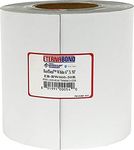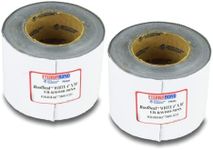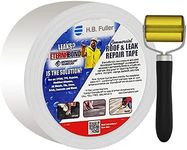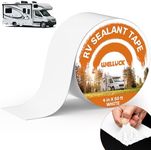Buying Guide for the Best Rv Sealant
Choosing the right RV sealant is important to keep your recreational vehicle protected from water leaks, drafts, and damage. The right sealant will help maintain the integrity of your RV, prevent costly repairs, and ensure a comfortable living environment. When shopping for RV sealant, it's important to understand the different types and features so you can select the best one for your specific needs and the areas you plan to seal.Sealant TypeSealant type refers to the chemical composition and intended use of the product. Common types include silicone, polyurethane, and butyl rubber. Each type has its own strengths: silicone is flexible and weather-resistant, polyurethane is durable and paintable, and butyl rubber is sticky and great for sealing seams. To choose the right type, consider where you'll be applying the sealant—silicone is good for windows and vents, polyurethane for areas that may need painting, and butyl for roof seams. Match the type to the surface and conditions for best results.
Application AreaThe application area means the specific part of your RV where the sealant will be used, such as the roof, windows, doors, or seams. Some sealants are designed for horizontal surfaces like roofs, while others are better for vertical surfaces or joints. It's important to pick a sealant that is formulated for the area you need to seal, as this ensures proper adhesion and long-lasting protection. Always check the product label to confirm it's suitable for your intended use.
Cure TimeCure time is the amount of time it takes for the sealant to fully set and become waterproof. Some sealants dry quickly, within a few hours, while others may take a day or more. If you need to use your RV soon after sealing, a fast-curing product is helpful. However, longer cure times can sometimes mean a stronger, more durable seal. Consider your schedule and how soon you need the area to be ready for use when choosing a sealant.
FlexibilityFlexibility refers to how well the sealant can stretch and move without cracking as your RV expands and contracts with temperature changes or movement. Highly flexible sealants are important for areas that experience a lot of vibration or shifting, such as around windows, doors, and roof seams. If your RV is often on the move or exposed to varying weather, prioritize a sealant with good flexibility to prevent leaks over time.
UV ResistanceUV resistance is the sealant's ability to withstand damage from sunlight. Sealants exposed to the sun can degrade, crack, or lose their sealing power if they aren't UV resistant. For exterior applications, especially on the roof or sides of your RV, choose a sealant that specifically mentions UV resistance to ensure it lasts longer and continues to protect your RV from the elements.
PaintabilityPaintability means whether you can paint over the sealant once it has cured. Some sealants, like polyurethane, can be painted to match your RV's color, while others, like silicone, usually cannot. If appearance is important or you want the sealant to blend in, look for a paintable option. If the sealant will be hidden or color doesn't matter, this may not be a priority.
Ease of ApplicationEase of application describes how simple it is to use the sealant. Some come in squeeze tubes or cartridges for caulking guns, while others may be in tape form. Consider your comfort level with applying sealant and the tools you have available. If you're new to sealing or want a quick fix, look for products labeled as easy to apply or suitable for beginners.














